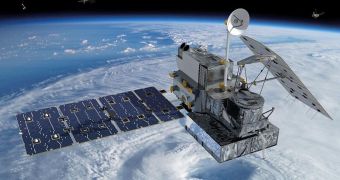Officials at NASA and the Japanese Aerospace Exploration Agency (JAXA) are currently on the final leg of their monumental effort to launch the Global Precipitation Measurement (GPM) Core Observatory satellite into low-Earth orbit. The spacecraft is scheduled to take off late next month.
This international science satellite ushers forth the promise of more precise global weather observations and measurements. The data it produces will be used for more accurate weather forecasting, as well as for gaining a deeper understanding of how global warming and climate change evolve.
GPM will be able to measure rainfall and snowfall precipitations on a global scale. The data it will produce will be integrated with other satellite-based datasets, such as those produced by NASA's A-Train – a group of spacecraft flying in row formation while collecting data on clouds, soil moisture, ocean salinity and other aspects of our planet.
After launch, GPM data will be used in tandem with NASA's already-extensive information input, to produce accurate, global-scale views on the state of our planet at any given point. At this point, GPM is scheduled to launch on February 27, 2014.
The satellite will be carried into low-Earth orbit aboard the H-IIA 202 delivery system provided by JAXA. Takeoff will occur from the Yoshinobu 1 launch pad at the Tanegashima Space Center, on Tanegashima Island, Japan. Mitsubishi is the main JAXA contractor for the Core Observatory.
“The water-cycle, so familiar to all school-age young scientists, is one of the most interesting, dynamic, and important elements in our studies of the Earth’s weather and climate,” comments the associate administrator for the Science Mission Directorate at NASA Headquarters, John Grunsfeld.
“GPM will provide scientists and forecasters critical information to help us understand and cope with future extreme weather events and fresh water resources,” the top official goes on to explain. He adds that the GPM Core Observatory will occupy a 407-kilometers (253-mile) orbit around Earth.
“The data from the GPM mission provides unprecedented measurements of global precipitation. The GPM Core Observatory will observe detailed characteristics of rain and snow systems that are also extremely important for improving weather and climate forecasts,” adds Gail Skofronick-Jackson.
The expert holds an appointment as a GPM project scientist with the NASA Goddard Space Flight Center (GSFC), in Greenbelt, Maryland.

 14 DAY TRIAL //
14 DAY TRIAL //